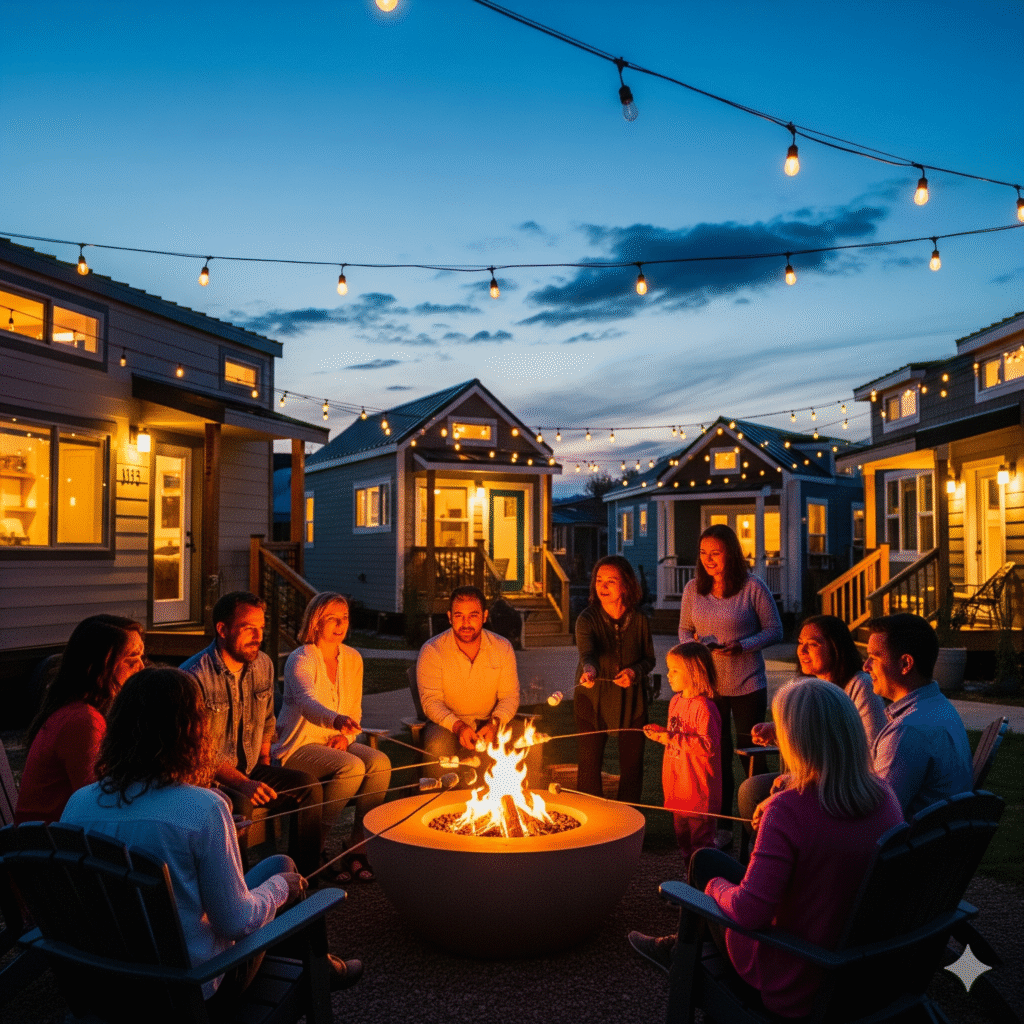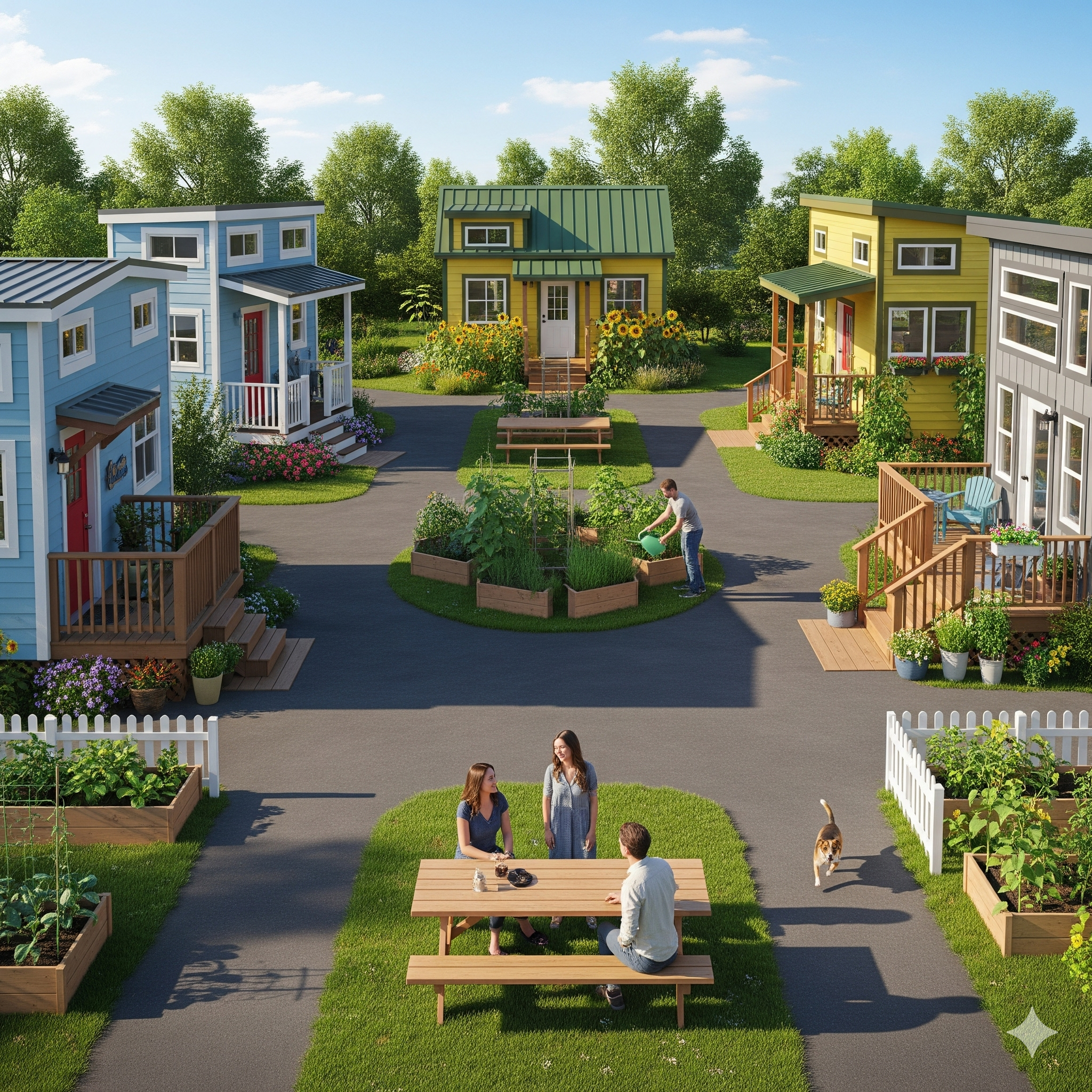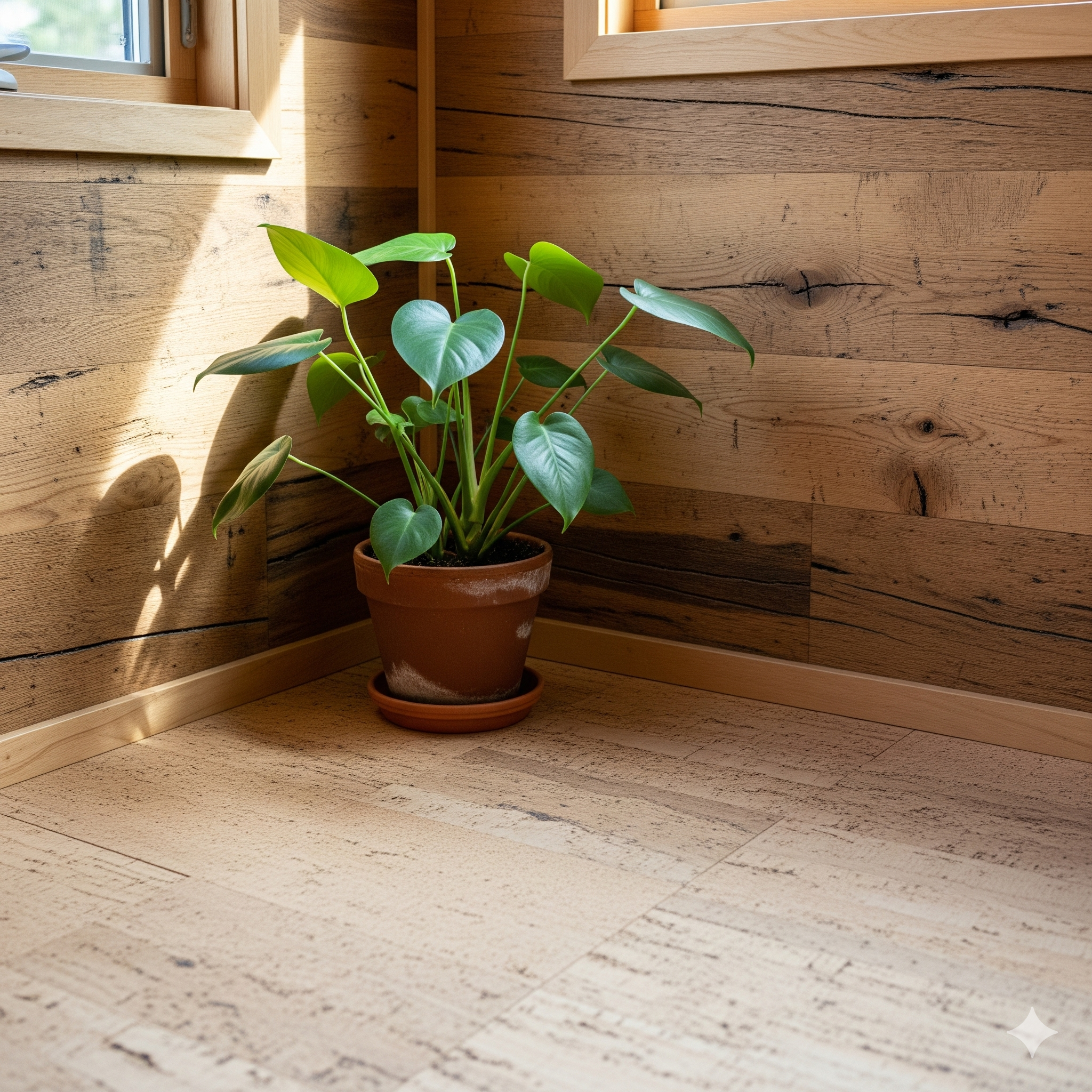Tiny House Communities: U.S. Guide
Discover the best tiny house communities in the U.S. Our guide explores different community models and highlights the best places to live tiny legally.
More Than a Home: Finding Your Place in U.S. Tiny House Communities
The tiny house dream often begins with a vision of solitude and self-sufficiency—a small, perfect home nestled in a private, scenic landscape. While that dream is beautiful, a new, more connected vision has emerged as one of the most exciting and practical aspects of the tiny living movement: the community. For many, the biggest challenge isn’t building the house, but answering the question, “Where do I legally put it?” Tiny house communities offer a powerful solution to this problem, providing not just a legal parking spot, but a shared social fabric, built-in amenities, and a neighborhood of like-minded people.
At NeatTinyHome.com, we believe that where you live is as important as what you live in. The rise of intentional neighborhoods designed for small footprints is one of the most significant developments in the search for sustainable and affordable housing. This guide, updated for September 2025, will explore the different types of communities available across the United States. We will highlight some of the best places to live tiny, discuss the benefits of a shared lifestyle, and provide you with the resources to find a community that feels like home. Forget the legal guesswork; it’s time to explore a world where tiny living is not just allowed, but celebrated.
What Exactly Is a Tiny House Community?
A tiny house community is a planned neighborhood or development specifically designed to accommodate tiny homes. Unlike simply renting a patch of land, these communities are thoughtfully laid out with the tiny lifestyle in mind. This means they offer the essential infrastructure that can be so difficult to secure on your own: legal zoning, utility hookups (water, sewer/septic, and electricity), and often, shared amenities. These amenities can range from simple green spaces and community gardens to more extensive facilities like clubhouses, laundry rooms, workshops, and even swimming pools. From my experience, the biggest draw for residents is the immediate sense of belonging and the legal peace of mind. These communities have already done the hard work of navigating local zoning regulations, offering a “plug-and-play” solution for tiny homeowners. This pre-approved legality is a game-changer for anyone looking for stable and secure places to live tiny.
The Different Models of Community Living
Not all tiny house communities are created equal. They come in various models, each catering to a different lifestyle, budget, and desire for permanence. Understanding these distinctions is key to finding the right fit for you. The table below breaks down the most common types of communities you’ll find in the U.S.
| Community Model | Primary Focus | Typical Ownership | Best For |
|---|---|---|---|
| Pocket Neighborhoods | Long-term stability and intentional design that fosters social interaction. | Owning both your tiny house (on a foundation) and the small lot it sits on. | Those seeking a permanent home, equity, and a traditional neighborhood feel. |
| RV Park Style | Flexibility, affordability, and providing legal parking for THOWs (Tiny Houses on Wheels). | Owning your THOW and renting a lot/pad on a monthly or yearly basis. | THOW owners, travelers, and those seeking a lower cost of entry. |
| Agrihoods | Sustainability, gardening, and a connection to food production. | Varies; can be rental lots or ownership, often with a working farm at the center. | Homesteaders, gardeners, and those passionate about an eco-conscious lifestyle. |
Finding Your Fit: Examples of U.S. Tiny House Communities
The tiny community movement is growing rapidly, a trend covered by major news outlets like Business Insider. While a comprehensive list would be endless, here are a few well-regarded examples that represent the different models:
- The Village at Flat Rock, North Carolina: A premier example of a pocket neighborhood, The Village at Flat Rock features beautifully designed tiny and small homes on permanent foundations, which residents own. With a strong focus on community, they have a pool, clubhouse, and regular social events.
- Acony Bell Tiny Home Community, North Carolina: Representing the best of the RV park style, Acony Bell offers spacious rental lots for THOWs with beautiful mountain views. They focus on giving residents space and privacy while still providing amenities like hiking trails and community spaces.
- Tiny Tranquility, Oregon: A unique model on the Oregon coast, Tiny Tranquility offers both rental lots for THOWs and tiny homes for sale. They boast an impressive indoor greenhouse and a large community lodge, blending the RV and Agrihood styles.
Finding these gems used to be a challenge, but online resources have made it much easier. Websites like TinyHouse.com have created directories and maps to help you search for tiny house communities by state, making it easier than ever to find potential places to live tiny. Additionally, the Foundation for Intentional Community has a directory that, while broader, often includes co-housing and eco-villages that are friendly to tiny homes.
Final Thoughts: The Power of a Tiny Neighborhood
The decision to move into a tiny house is a significant lifestyle change, and choosing to do it within a community can make that transition smoother, more enjoyable, and legally secure. These neighborhoods combat the potential for isolation and provide a built-in support system of people who understand the unique joys and challenges of the lifestyle. Whether you’re looking for a permanent foundation or a flexible parking spot, exploring tiny house communities might just be the key to unlocking your perfect tiny life.
Would You Live in a Tiny Community?
What is the biggest appeal of community living to you? The social aspect, the legal security, or the shared amenities? Let us know what you think about tiny house communities in the comments below!
Frequently Asked Questions
How much does it cost to live in a tiny house community?
Costs vary widely. For lot rentals in an RV-style community, you can expect to pay anywhere from $400 to $900+ per month, depending on location and amenities. For pocket neighborhoods where you buy the land, the cost of the lot could be $40,000 to $100,000+, in addition to the cost of your home.
Are there tiny house communities for families with children?
Yes, many communities are family-friendly and welcome residents of all ages. However, some communities may be geared more towards retirees or adults. It’s important to research the specific culture and rules of each community to find one that is a good fit for your family.
Can I start my own tiny house community?
Yes, but it is a very complex and expensive undertaking. It involves purchasing a suitable tract of land, navigating a maze of local zoning and development regulations, and investing heavily in infrastructure like roads, water, power, and septic systems. It is a project for dedicated and well-funded developers.





Post Comment